Fancy going off-grid with your camera? Here’s how to prepare, stay safe, and come back with spectacular images
Introduction
There’s something exhilarating about escaping from everything and everyone. Even more so when documenting that time with your camera and capturing a remarkable set of images from that journey.
Below, I share my top tips for photographing in remote, off-grid locations. These tips and advice will help you have a safe and enjoyable photography experience regardless of where your adventure leads you.
Why go off-grid with your camera?
Off-grid photography trips take you away from phone signal, cities, and crowds and into remote places where nature is at its most raw. That could mean taking your camera on a hike into the mountains, camping by a loch or on an empty beach, or simply heading somewhere without Wi-Fi, power, or distractions for some time.
These kinds of trips offer a rare chance to slow down, connect with your surroundings, and really focus on your photography. They’re not always easy, but the photographic rewards are often unforgettable.
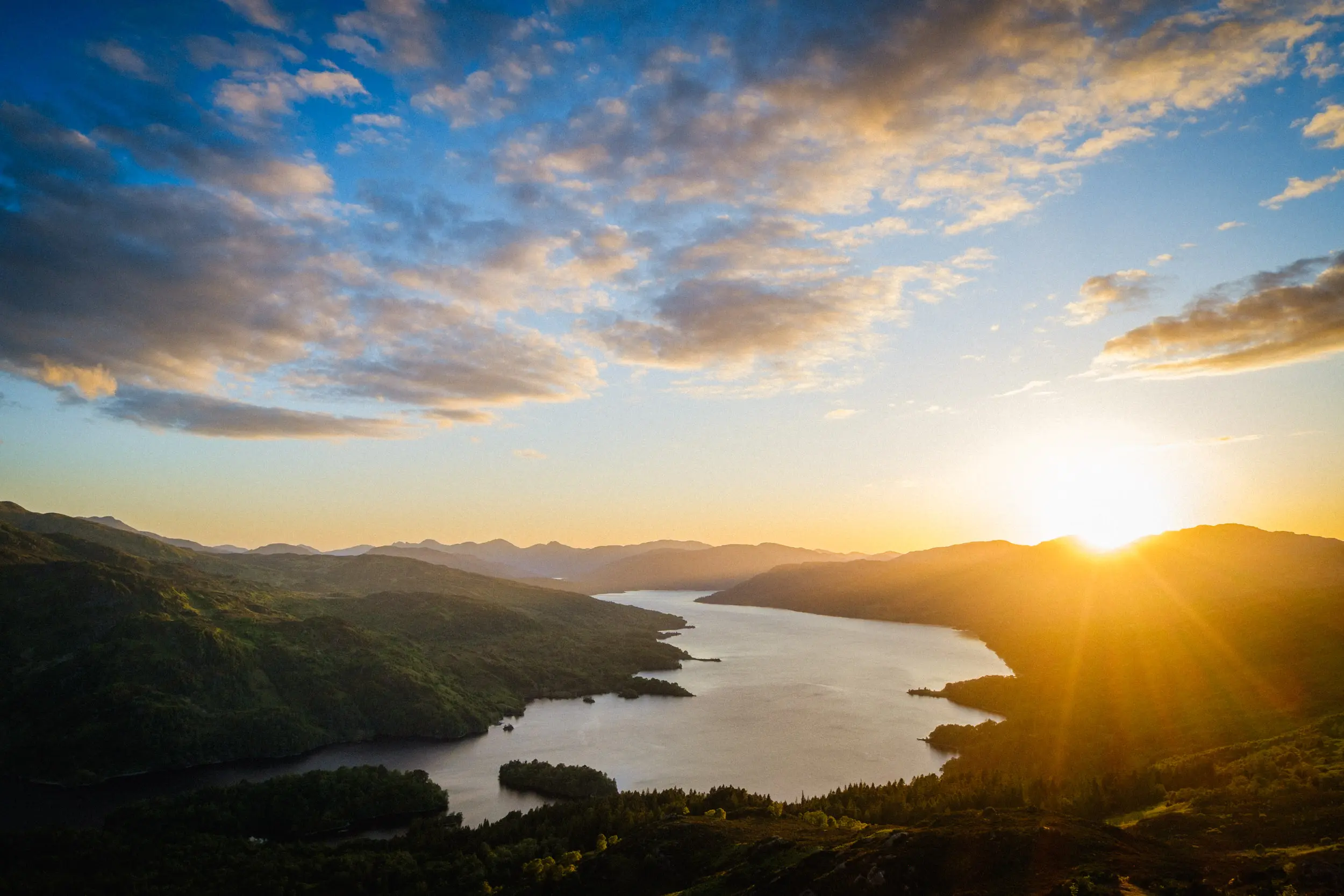
Preparation
The key to having a successful photography trip off-grid is to put some planning into action. While I’m all for spontaneity with photography at times, for going off-grid, you really should at least be prepared, and here are my top tips for doing so:
1 Plan in advance
This first bit of advice may seem obvious, but it's important to have a plan when exploring remote areas and going ‘off-grid’, even if it’s a vague plan.
There are several reasons for this. First, researching your destination in advance can reveal whether there are actually good photographic opportunities where you're thinking of going; you want to ensure that your chosen location will have some interesting sights for photography.
Additionally, having a rough plan can be very helpful from a safety perspective. Knowing where you're going, how to get there, what to expect upon arrival, and the best time to go there can make a big difference. It also helps you figure out what to pack, which I will explain later in this guide.
2 Check the weather and be flexible
This is a significant one that has caught me off guard beforehand and prompted me to change my plans multiple times.
You don’t want to find yourself in an off-grid, remote location during severe weather when adequate shelter is limited. Firstly, it can be an exceedingly unpleasant experience, and secondly, it may not be particularly safe either. Therefore, wherever you’re going, always ensure you have the means to check the weather forecast in advance.
There may be occasions when you need to be flexible and alter your plans at the last minute to avoid the worst of the weather. And that’s not just heavy rain and storms; you must also be cautious during excessively hot weather. For instance, venturing out in the scorching midday heat of summer without access to water can be pretty hazardous. So, always check the weather and conditions beforehand; safety should be your top priority, whatever you do.
No photo opportunity is worth putting yourself at risk.
3 Pack everything you think you’ll possibly need
To prepare for your off-grid photography adventure, list everything you might need. Considering all the equipment and items necessary for your photography and personal comfort is essential, and it's crucial to ensure you have everything you might need in advance, so you don’t lack something vital, like a camera lens, when you're several hours away from home.
First, focus on your camera gear. Check that all your lenses, filters, batteries, tripods, and monopods are packed and inventoried. Next, consider what you need: camping gear, appropriate clothing (more on that below), chargers, power banks, and a mobile phone. Think about everything that will ensure your comfort in the wilderness or a remote location.
Don’t forget to include any additional luxury items that might enhance your experience. The goal is to enjoy exploring and capturing photographs without making things unnecessarily difficult for yourself. Making sure you’re comfortable will allow you to focus on your photography rather than worrying about whether you have everything you need. Keep in mind that you don't need to carry everything with you; you can leave some items in your car, tent, or whatever type of lodging you have.
"No photo opportunity is worth putting yourself at risk."
3 Pack everything you think you’ll possibly need
To prepare for your off-grid photography adventure, list everything you might need. Considering all the equipment and items necessary for your photography and personal comfort is essential, and it's crucial to ensure you have everything you might need in advance, so you don’t lack something vital, like a camera lens, when you're several hours away from home.
First, focus on your camera gear. Check that all your lenses, filters, batteries, tripods, and monopods are packed and inventoried. Next, consider what you need: camping gear, appropriate clothing (more on that below), chargers, power banks, and a mobile phone. Think about everything that will ensure your comfort in the wilderness or a remote location.
Don’t forget to include any additional luxury items that might enhance your experience. The goal is to enjoy exploring and capturing photographs without making things unnecessarily difficult for yourself. Making sure you’re comfortable will allow you to focus on your photography rather than worrying about whether you have everything you need. Keep in mind that you don't need to carry everything with you; you can leave some items in your car, tent, or whatever type of lodging you have.
4 Wear the appropriate clothing
Once again, this point emphasises safety and comfort, ensuring you are well-prepared for an off-grid adventure.
If you know you’ll be heading to a particularly wet location, make sure you have suitable clothing that is either waterproof or quick-drying. There’s nothing worse than being stranded in a remote area, soaking wet and without shelter. Also, if you’re venturing into a hot environment with limited cloud cover, opt for appropriate attire such as shorts and T-shirts or loose-fitting clothes, and don’t forget sunscreen. This is all about staying comfortable; being appropriately dressed can significantly enhance your photography experience, because if you’re uncomfortable or not wearing the proper gear, it could detract from your enjoyment and ultimately affect the quality of your pictures.
Footwear is another crucial consideration. Avoid inappropriate shoes, especially if you plan to hike up a mountain; ensure you have well-fitted walking boots or appropriate shoes for your destination.
5 Plan for charging everything up and have backups
Ensure that everything you need is fully charged; this includes your camera batteries. Consider bringing a spare if possible, and ensure your phone has plenty of battery power. Make sure any torches or headlamps also have a charge, as this will make your life much easier when venturing into the wilderness when it’s dark.
Additionally, having a power bank is incredibly useful, so if any devices lose power while away from electrical sources, you'll have a backup to recharge them. A top tip is to keep your phone on low power mode, as the last thing you want is to find yourself in an off-grid and remote location without a functioning mobile phone.
6 Map it all out
This is one of my favourite tasks when it comes to planning a trip into the wilderness: mapping everything out.
By this, I mean taking time to explore the location on Google Maps or using Ordnance Survey maps to understand the terrain clearly. Look for notable points of interest, any roads or areas of private land in the vicinity, public footpaths and rights of way. This preparation ensures you have a solid understanding of what to expect along the way, allowing you to be well-informed about what lies ahead.
If you expect to lose signal when in the field, download offline maps in advance (e.g. Google Maps or OS Maps) or take a physical map and compass.
7 Other safety considerations
Just bear in mind that safety is paramount when it comes to venturing into the wilderness. As I mentioned above, it’s crucial to have a plan: map it out, pack everything you need, and ensure all your devices are charged fully.
There are some extra safety measures you can take, too. For instance, you can also carry a first aid kit with you. If you're travelling by car, have a spare set of clothes and some water in the boot for emergencies. Staying well-hydrated is essential, so knowing where to access clean drinking water nearby is hugely beneficial too.
Lastly, always inform friends or family about your whereabouts so someone knows where you are and when to expect your return.
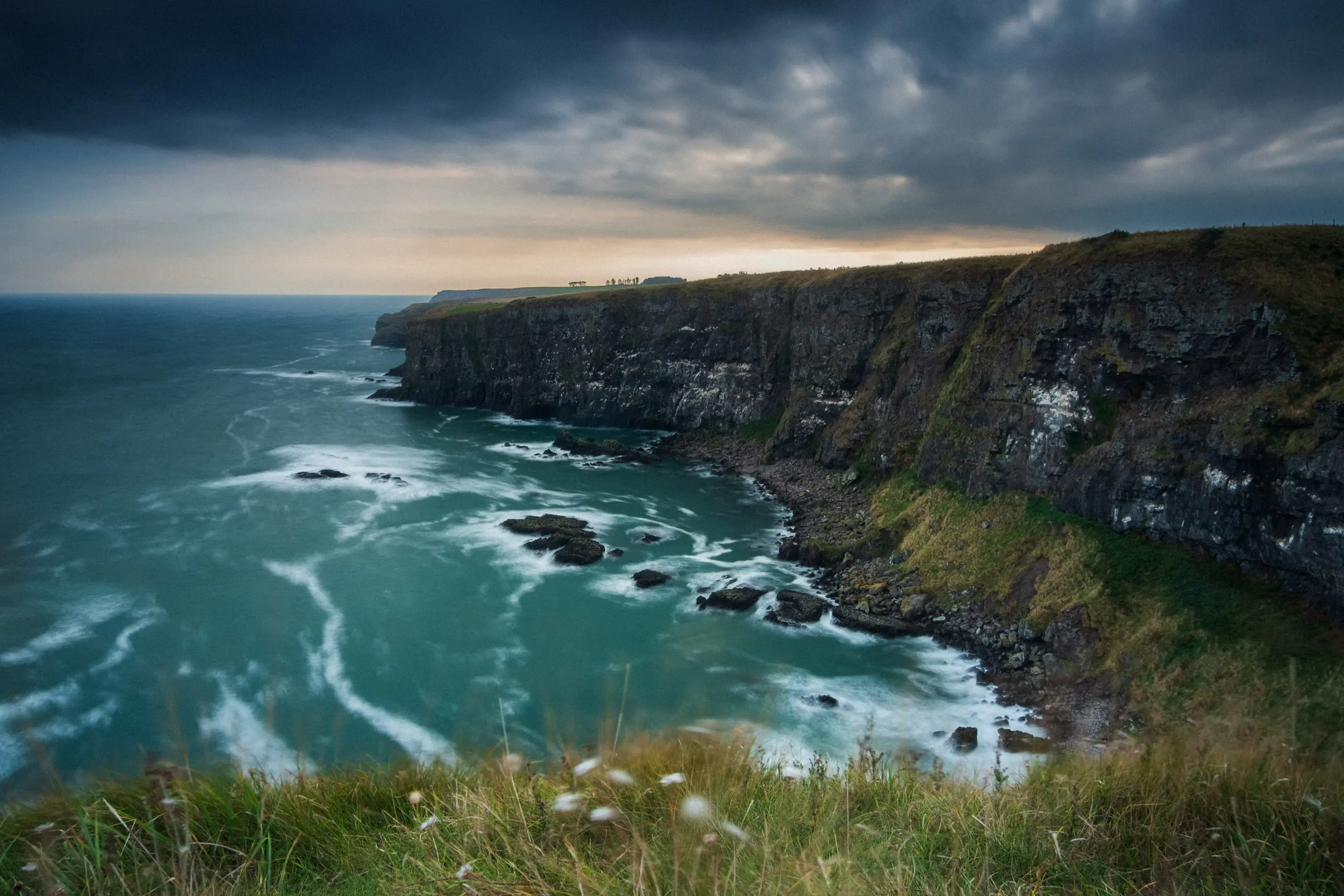
Out in the field when off-grid
Once you've got a plan in place, it’s time to get out there!
These tips below focus on what to do when you're out in the field, with my advice for making the most of your time on location to enhance your photography experience.
1 Be present
It took me a while to learn this one, but I believe it's an essential skill to have in order to enhance your photography and enjoyment on an off-grid experience: be present while you're there.
Embrace your surroundings and take it all in. Avoid looking at your phone, listening to something with your headphones, or any other distractions; engage all your senses with your environment. Breathe in the fresh air, listen to the sounds of wildlife and nature, and appreciate the surroundings. Feel the ground beneath you, observe what's in front of you, and fully embrace what you see.
By tuning in to your senses, you'll be genuinely present in the moment, whether in a wilderness landscape or a remote, pristine location. Feeling that connection to nature and the outdoor environment is a beautiful experience.
When you are present like this, you'll find that images, visuals, frames, compositions, feelings, and emotions that resonate with your photography will naturally present themselves. As a result, you'll capture some truly stunning photos.
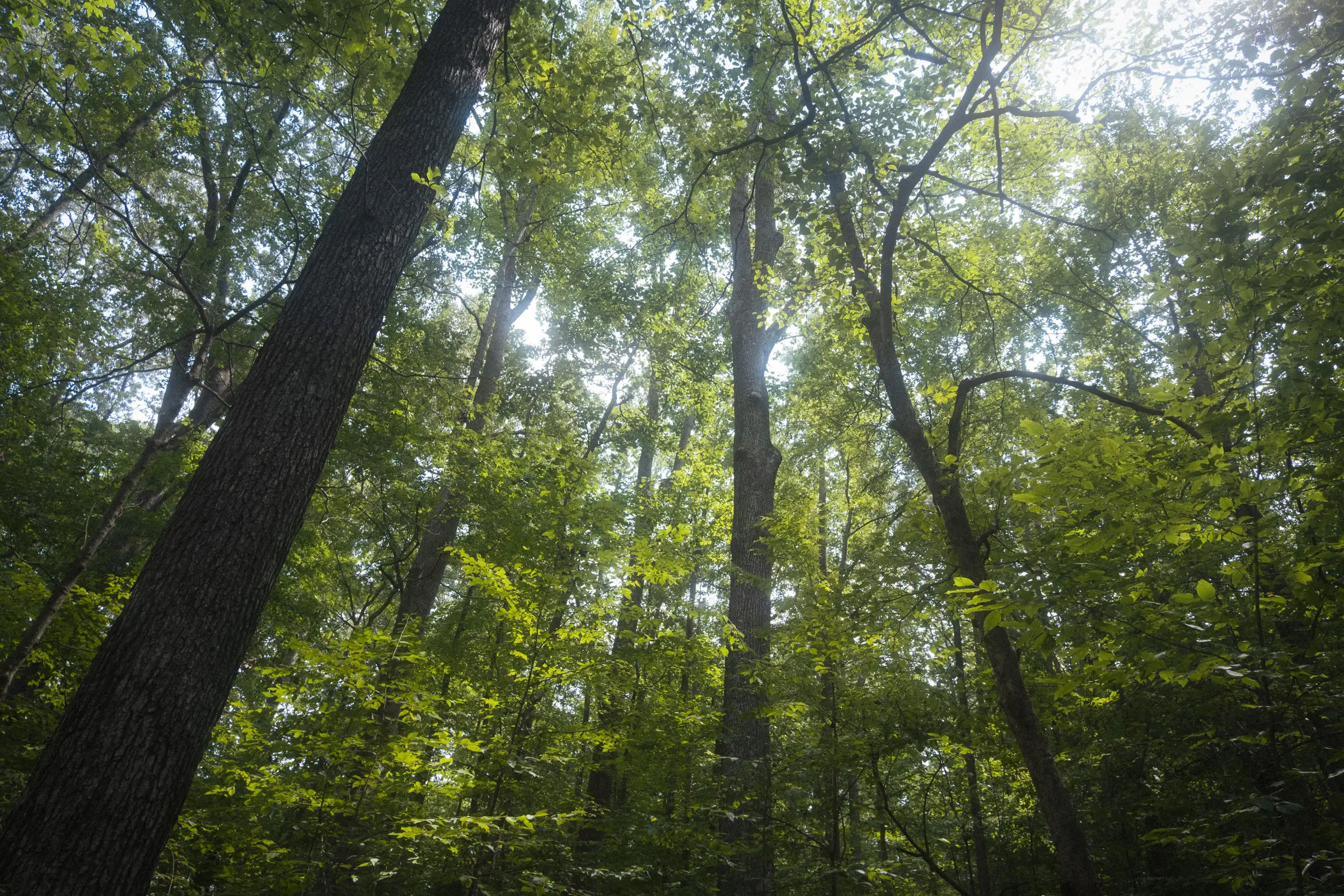
2 Go slow
Being present is essential, and I also advocate for taking your time, too.
You don’t need to rush through the landscape or hurry from place to place. There’s no need to make a significant effort to go off-grid, only to spend a short time in each location before moving on.
Instead, go slow with everything and take plenty of breaks. I recommend sitting down, closing your eyes, and taking it all in at various points. By slowing down, you'll begin to notice things you might have otherwise missed, such as interesting compositions and beautiful light that moves across the landscape.
So, take your time and enjoy the process.
Below are two images from my recent trip to the remote Ardnamurchan Peninsula in the far west of Scotland. I spent a couple of hours on the beach, observing how the light changed over time while taking photos. It was a beautiful experience; not only did I capture some great images, but I also enjoyed the hours spent listening to the sound of the waves, watching wildlife, and feeling the sea air.
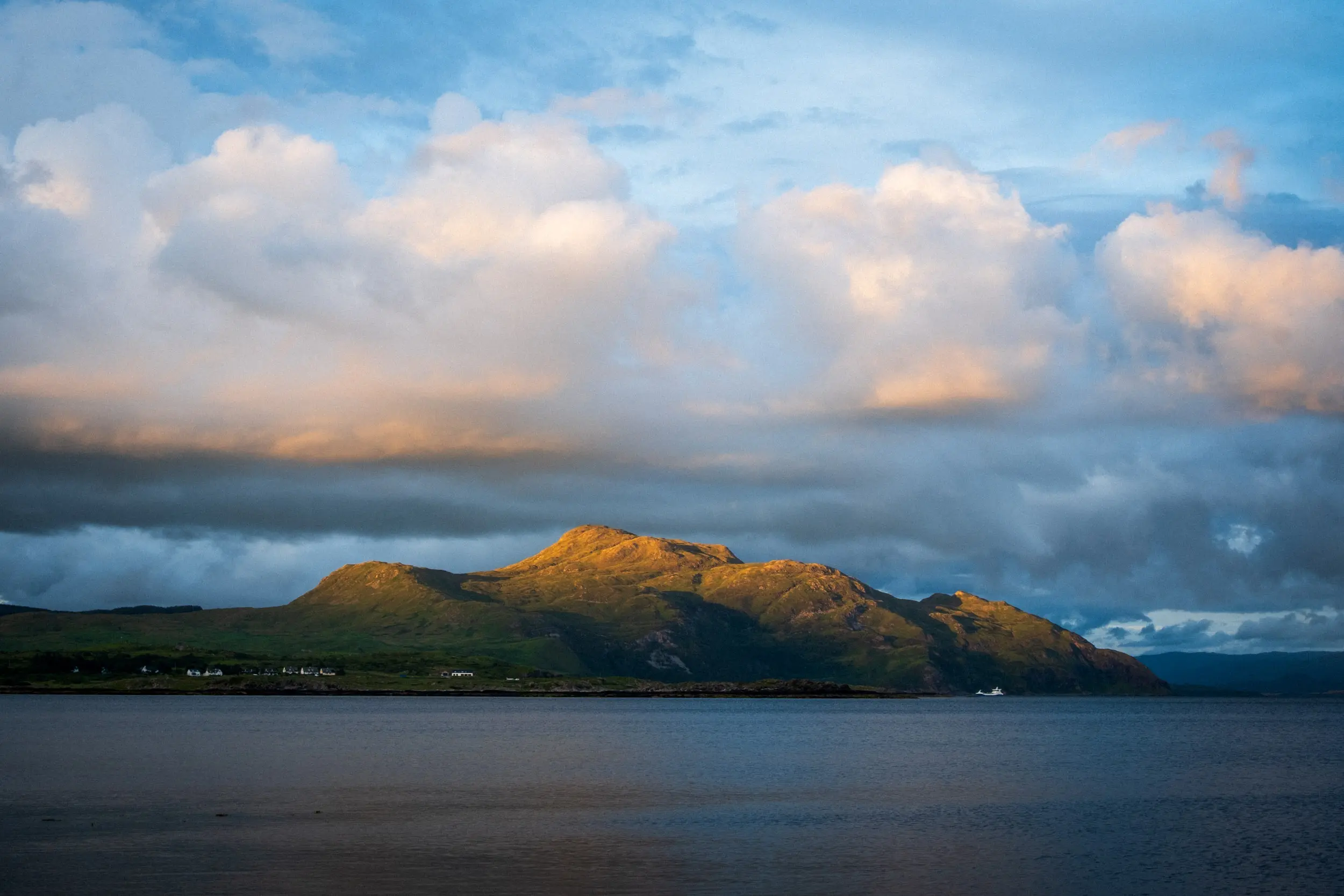
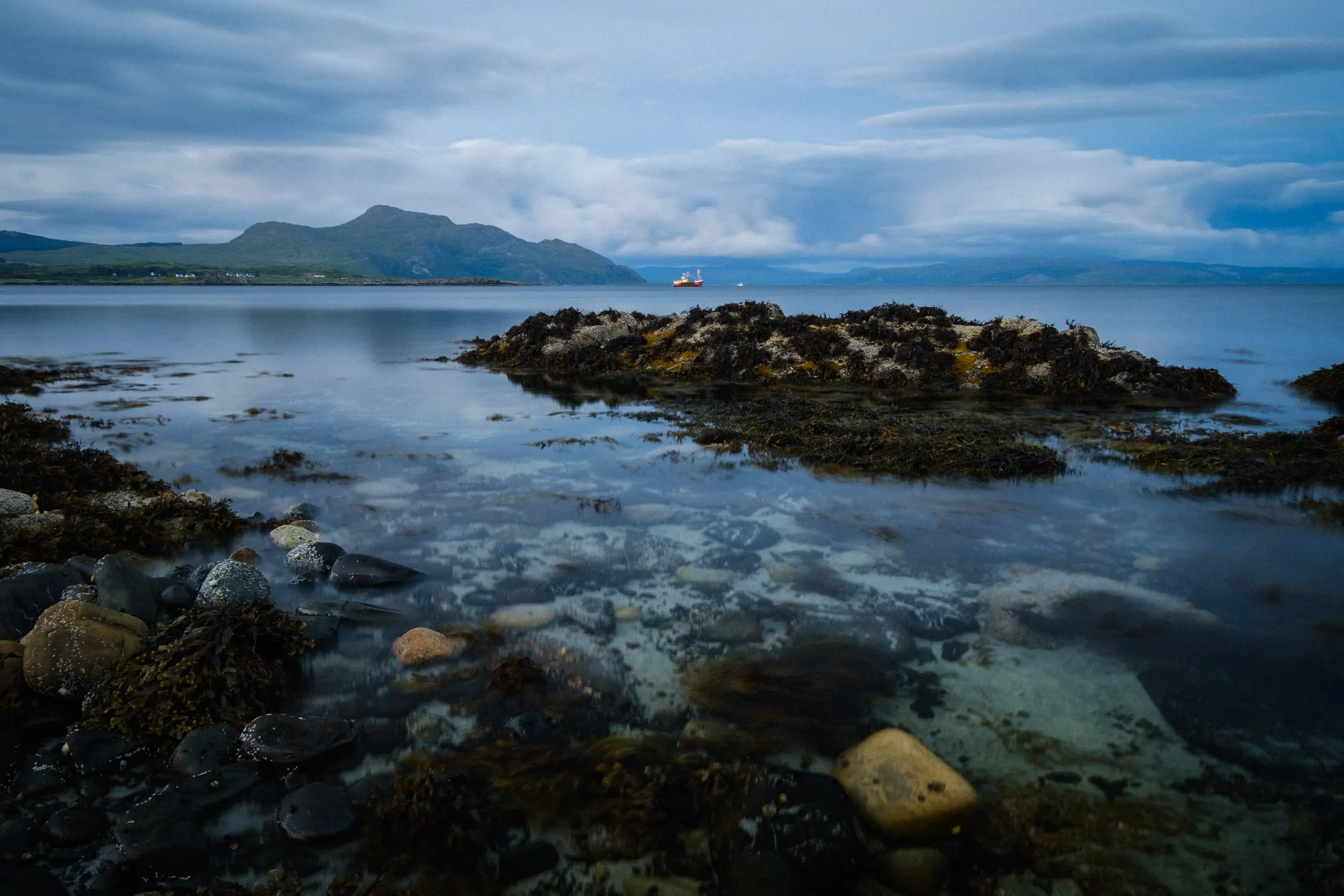
3 Explore and surprise yourself with what you discover
When you’ve made a significant effort to go off-grid and reach a truly remote location, take the opportunity to really explore.
Climb hills, get low to the ground, and wander around all the nooks and crannies to discover all the different parts of your area. It's a wonderful experience to explore in such an isolated place; you'll likely have it all to yourself. Enjoy the solitude in the wilderness and have fun exploring new sights.
Exploring can also greatly enhance your photography. It’s during these moments of wandering that you can capture the best images. So, take advantage of your surroundings and immerse yourself.
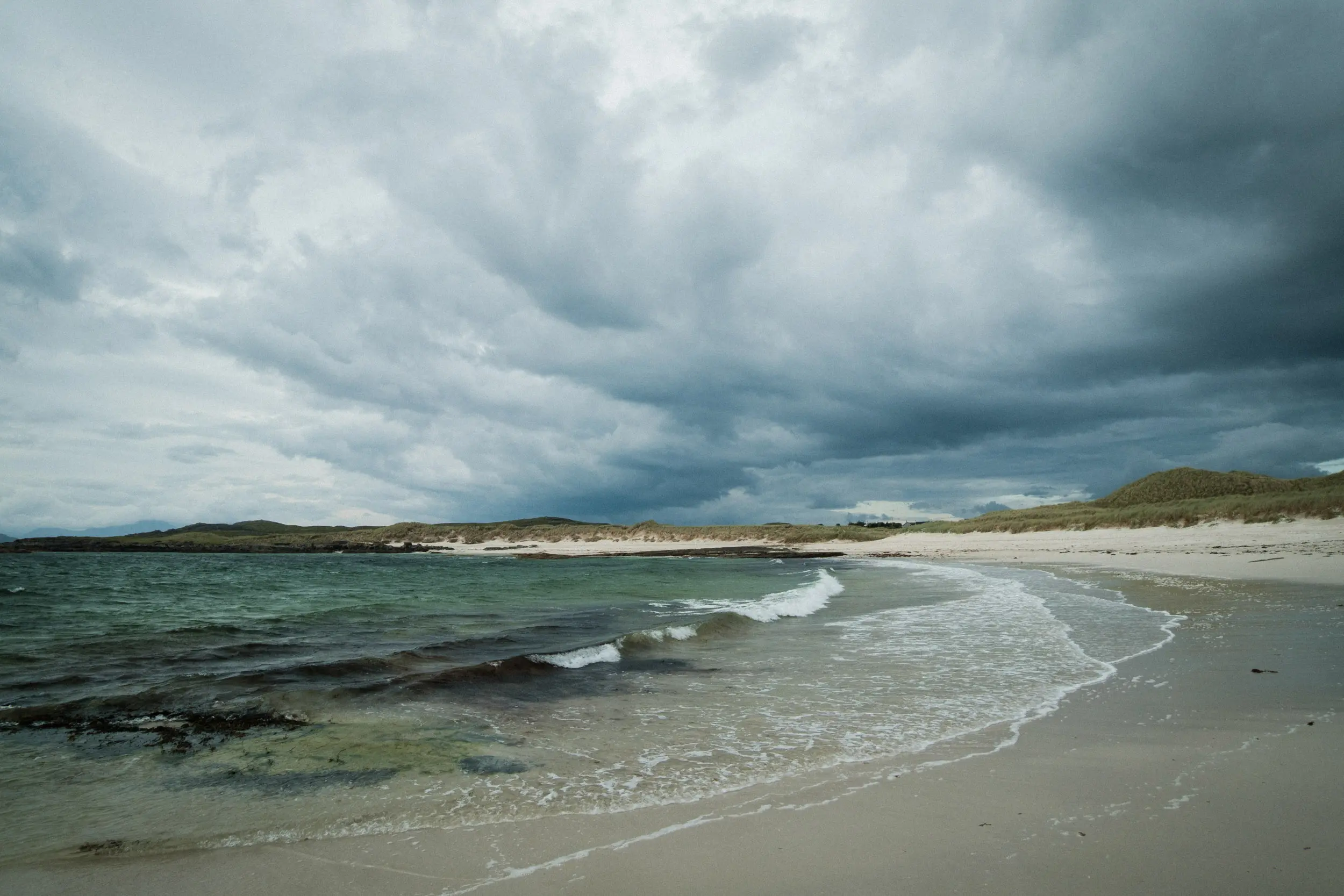
4 Bring a notebook
I also recommend bringing a notebook with you (if you have space, great, if you don’t make space!).
Writing down your thoughts and feelings about where you are at the time can be incredibly valuable, especially when off-grid.
Alongside your photographs, these written reflections will serve as a documentation of your experiences. You can later do something with this material, like make it into a more extended photo essay or story, which I will discuss later in this guide.
Additionally, taking the time to write notes helps you slow down and appreciate your surroundings. For instance, if you are sitting on a beautiful beach or standing atop a mountain, take a moment to jot down your thoughts and feelings in your notebook while in that moment. Doing this will enhance your experience and enrich the memories you create, which will come across in your photographs.
What kit to pack for going off-grid? My kit recommendations:
When heading off-grid, using the best kit you can access is worth it. Remote locations often offer rare photo opportunities, so be prepared to make the most of them.
Here’s the gear I personally recommend:
1 Camera and a couple of lenses
Bring a combo that gives you flexibility, like a zoom or wide and a prime.
2 Lightweight but sturdy tripod
You’ll want stability, especially for longer exposures, but nothing too heavy if you’re hiking.
3 Monopod
A great lightweight alternative that can double as a hiking apparatus, I wrote about my experience with the Three Legged Thing Alana monopod here. You can also see more monopods on the 3 Legged Thing website and sign up to their newsletter to get 5% off your first order!
4 Filters
I always bring my CPL, ND and GND filters, plus some creative options. Lately, I’ve been experimenting with disposable-style lenses for an analogue feel—see the results in this guide and this one.
5 A comfortable kit bag
Essential for protecting your gear and carrying extras like warm layers, snacks, and water.
After your adventure: Editing, storytelling, and sharing your images
Once you're feeling reflective from your trip and at home, it's a great time to edit your images, where you can continue to embrace the spirit of being off-grid while sorting and editing your photos.
What I mean by this is to treat the editing process as an extension of your experiences and enjoyment during your trip. So, read on, and I'll explain what I mean.
1 Give your images an edit that reflects the moment
When processing your images and going through your usual editing workflow, it's essential to consider how your edits reflect the moment you experienced while taking the picture. For example, avoid going overboard with the edits to the point where the images no longer represent what you felt at that moment.
Let me illustrate this with an example from a recent trip to the isolated Sanna Beach, Scotland. I ensured that my edits captured how I felt while enjoying that moment of being there; the gentle breeze, the clear water, the warmth from the sun, and the scene's overall beauty. In my images, I focused on making the water vibrant, enhancing the sky, and highlighting the clouds to reflect my emotions at that time.
I wanted the scene to feel warm, inviting, and bright, rather than dark, cold, or dull, as that was not how I felt during that moment. You can see the images below to understand what I mean better.
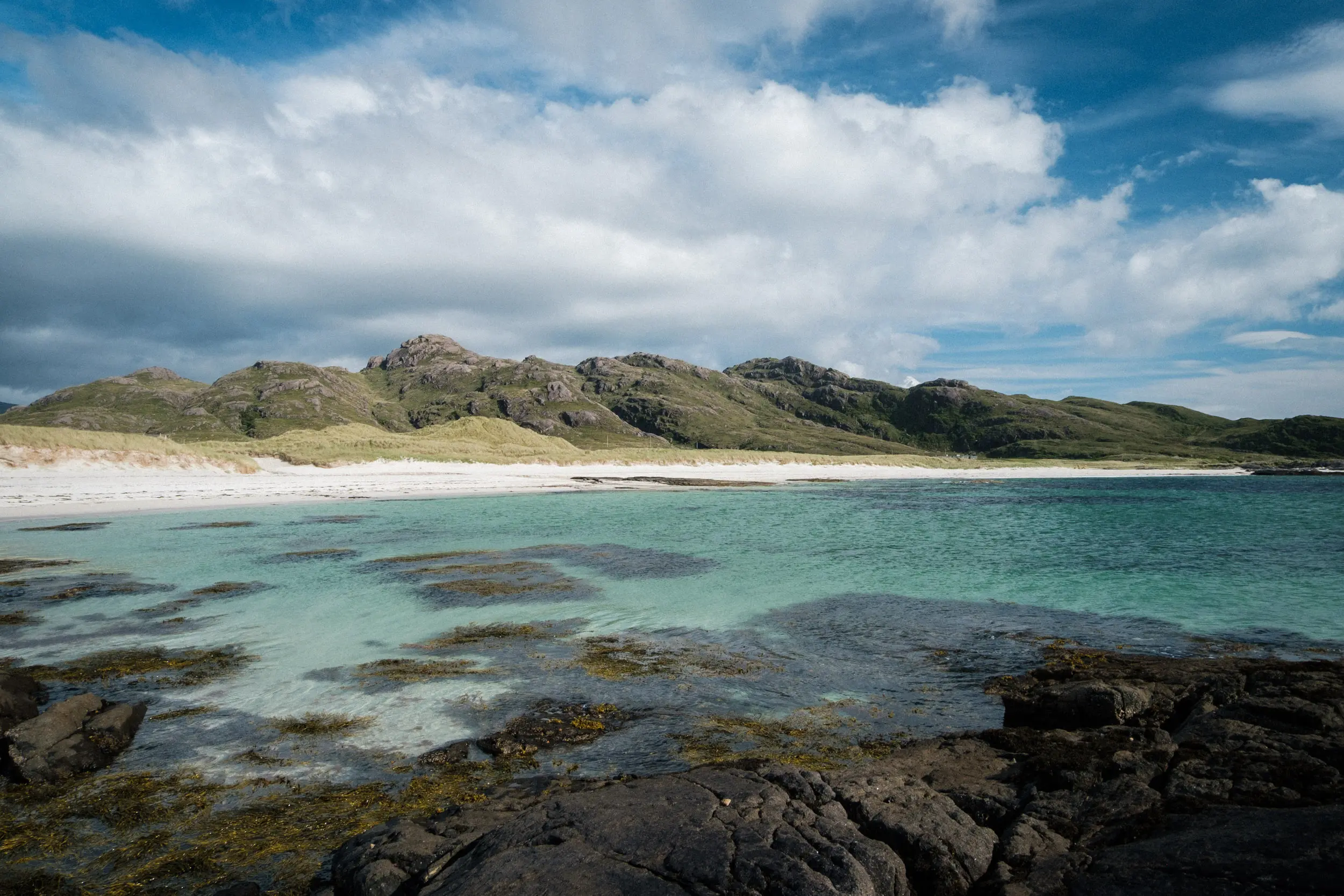
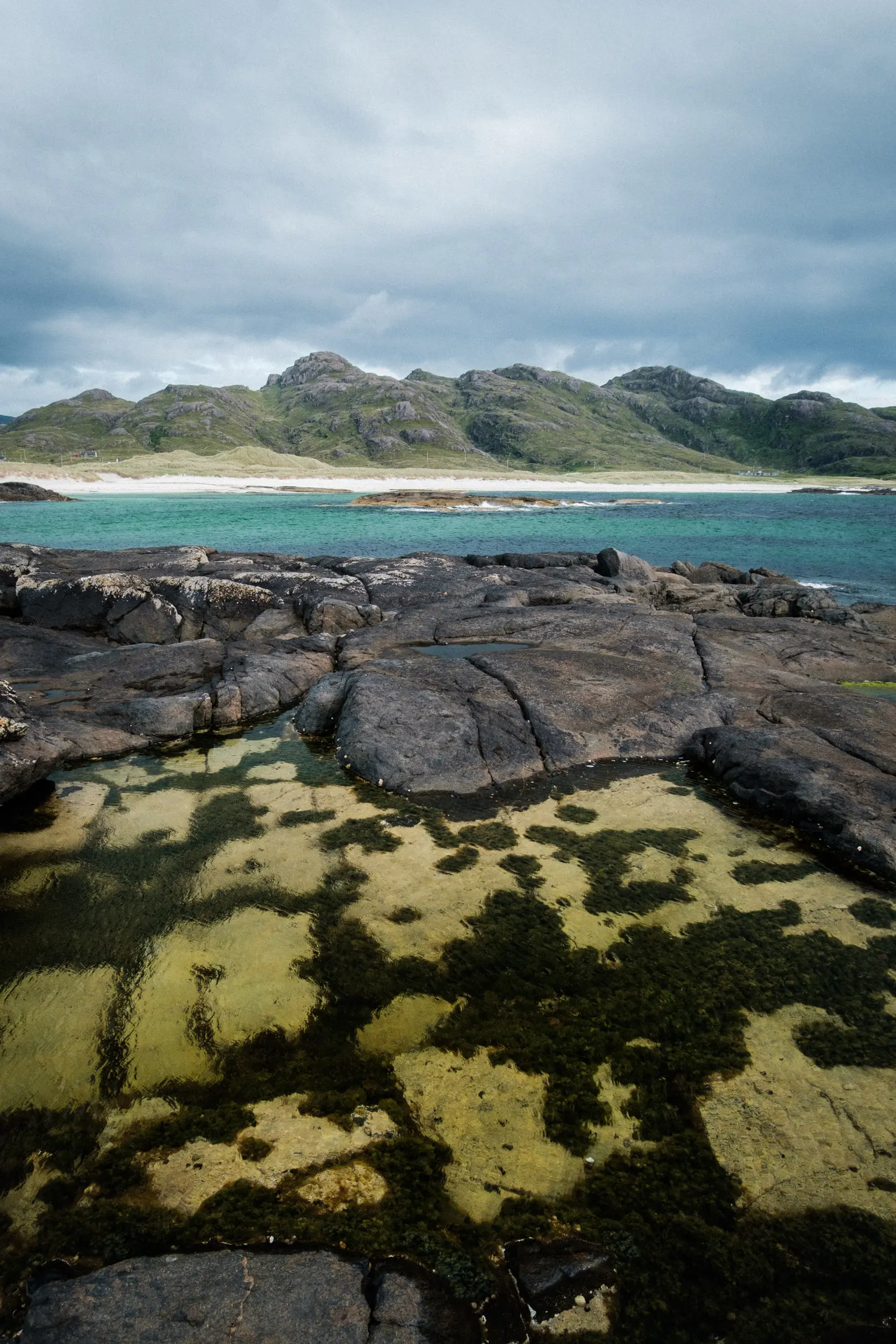
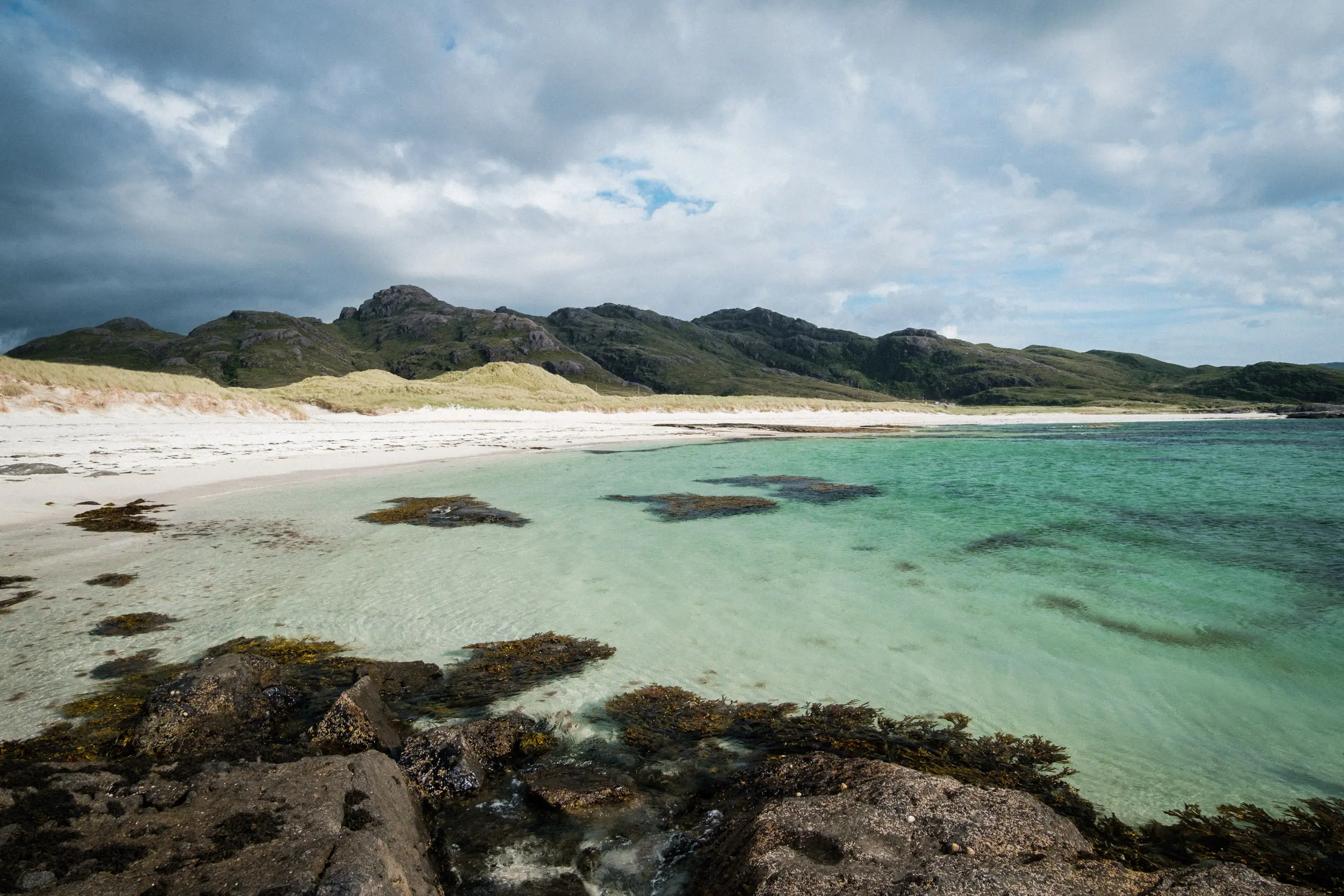
2 Choose the images where you remember the moment
When editing your images, particularly when you review your entire collection, choosing photos that genuinely reflect your memories and feelings from that moment or trip is important
For your final edit, whether you are publishing or printing your work, focus on selecting images that resonate with you. There's no need to include every photo; only choose those that capture your experience, as images that don’t reflect your feelings might not accurately represent your memories from that time.
I took at least 30+ images of this beach in the image below at Rackwick, Hoy, Orkney, but this one image has stayed with me. Every time I look at it, I remember having to clamber over those huge boulders in the foreground and the silence while watching the clouds eerily move across the cliffs.
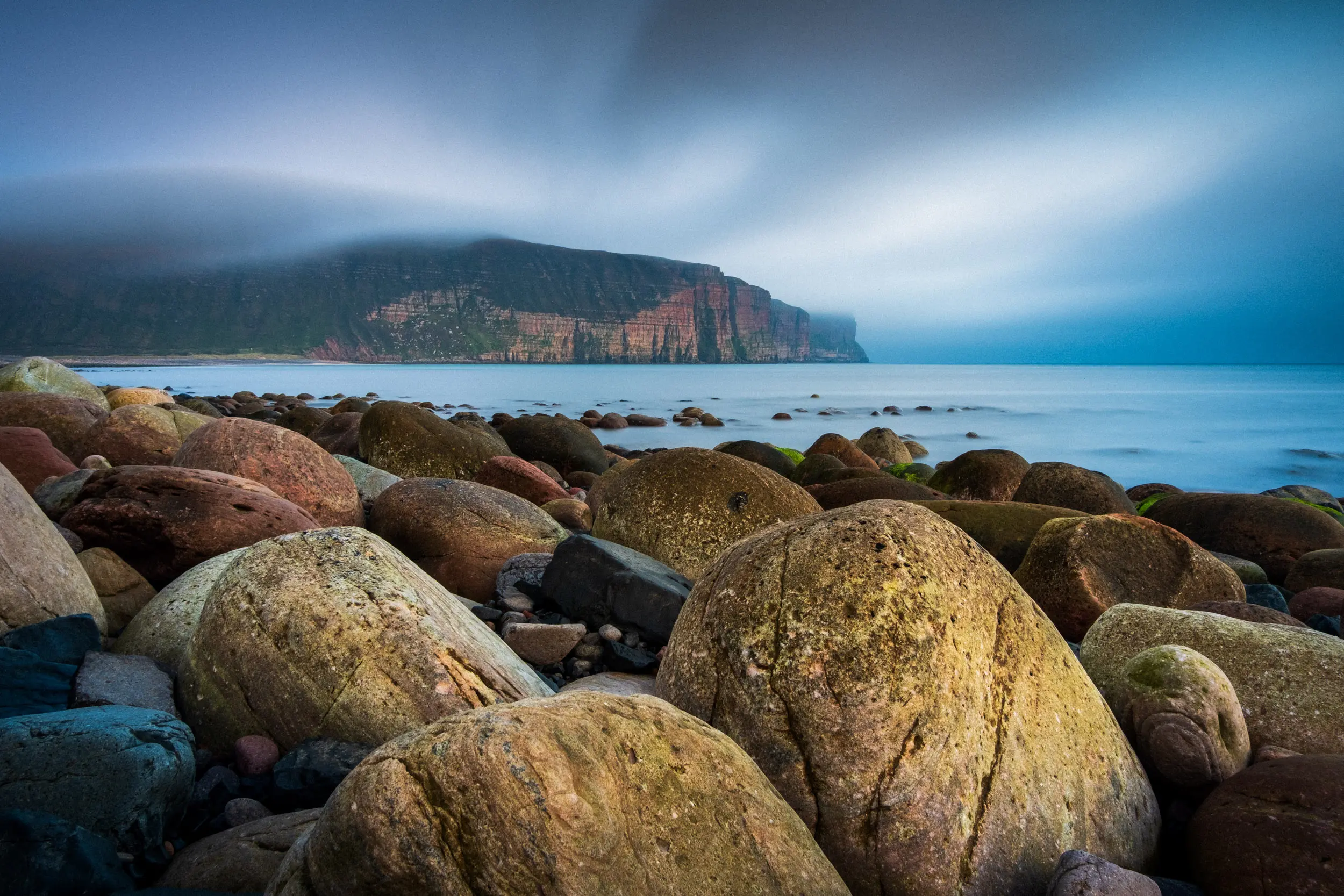
3 Work in series or stories and document your adventure
I always suggest considering your photography as a series of images, especially from an adventure, and edit, publish, and work with these photos as a cohesive body of work.
This series doesn't necessarily have to feature a common theme; it can consist of different snapshots from various locations you've visited.
Alternatively, you could create a more in-depth project that tells a story. You can add captions and write about your experiences while taking the pictures, transforming them into an actual narrative. This approach results in a stronger body of work and something far more special than simply having a collection of random shots without a thoughtful connection or story behind them.
Below is are some images that I decided to make a series from, taken on the remote island of Hoy on the Orkney Archipelago. The images have been edited in the same style and showcase a variety of landmarks and viewpoints from that same location.
.webp)
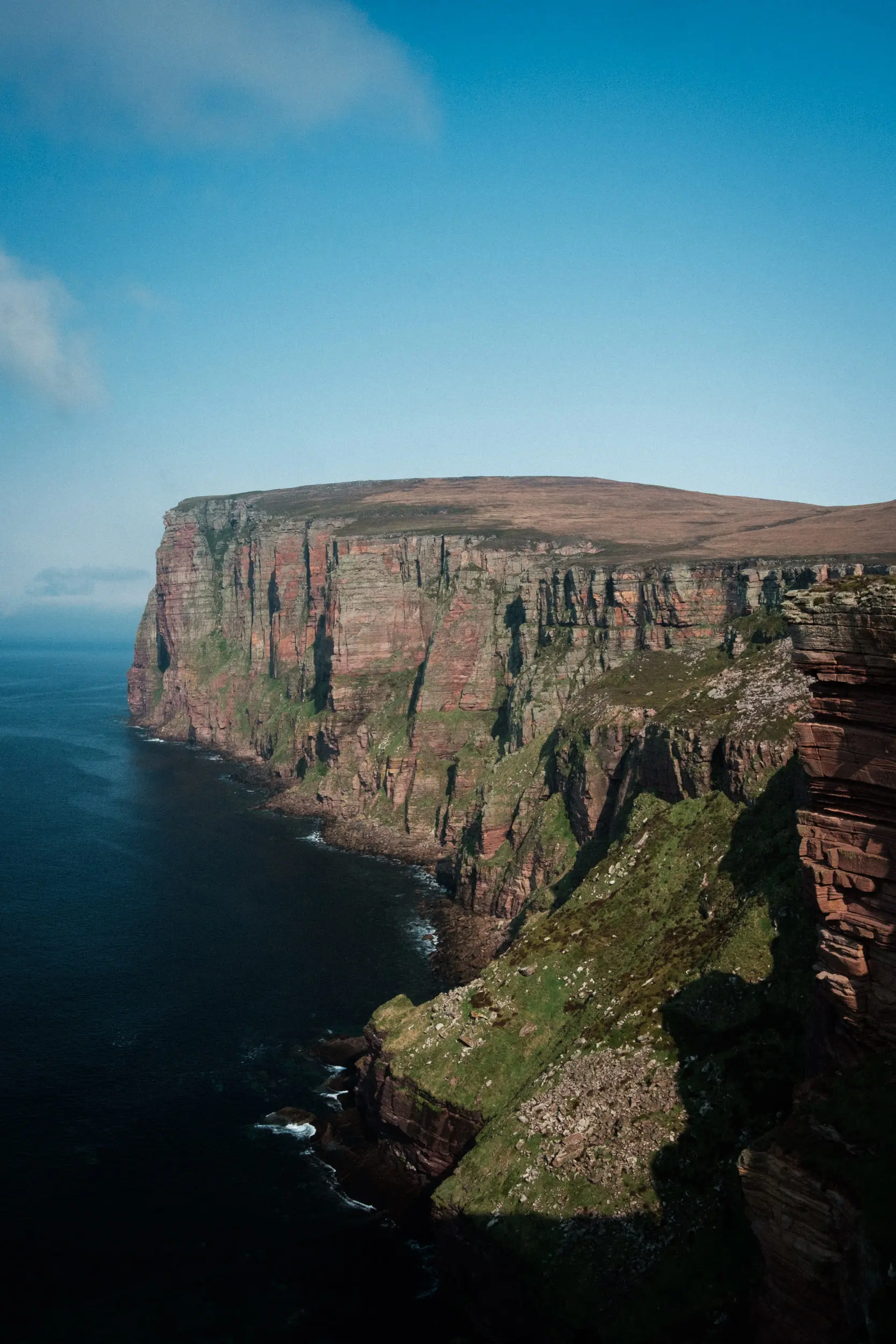
.webp)
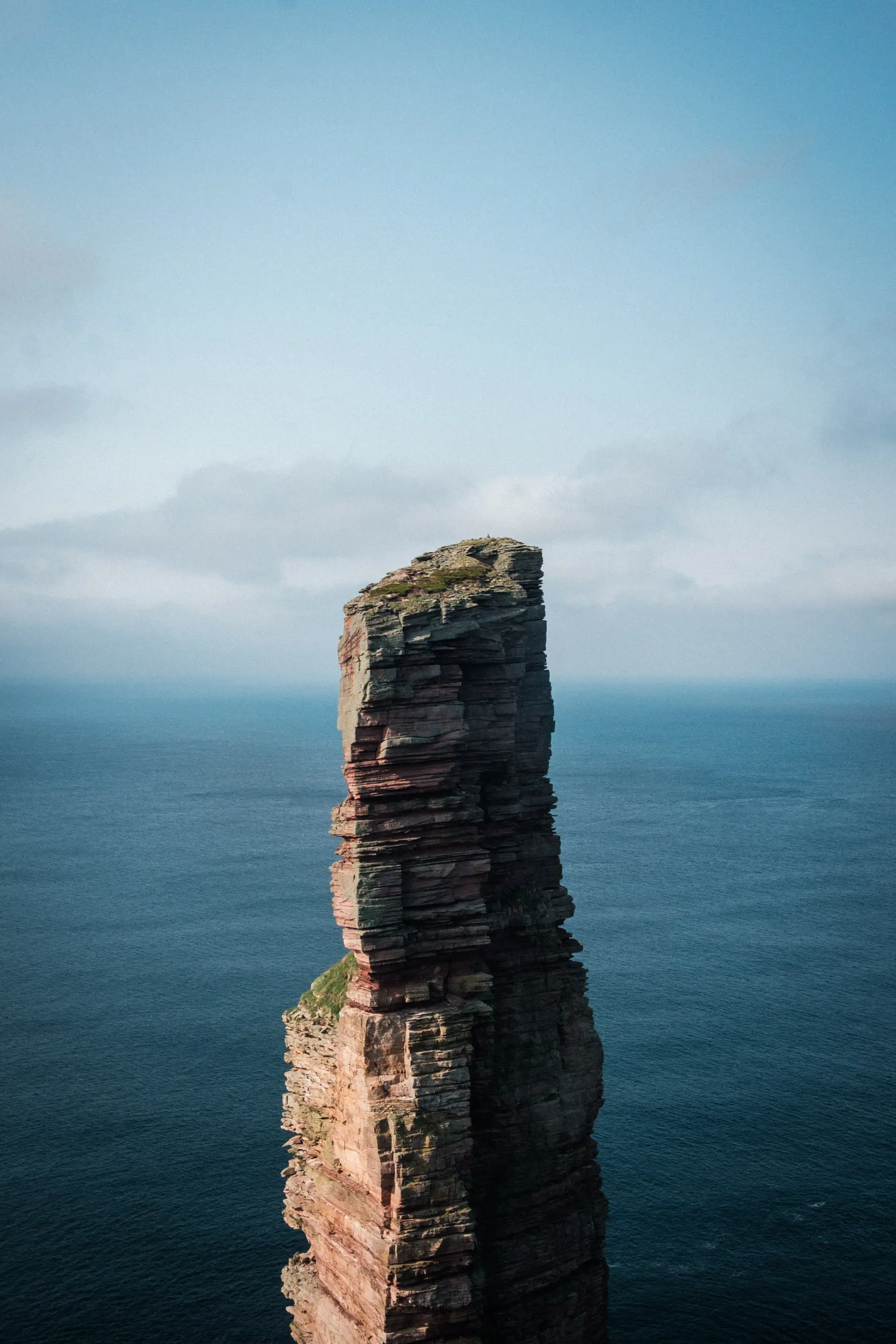
Final thoughts
Venturing into remote, off-grid locations to capture photographs is as much about the experience as the final images.
By preparing in advance, getting into the mindset and having the right equipment, you’ll stay safe and comfortable, have a more meaningful connection with the places you visit, and get some really spectacular images.
And lastly, enjoy it! Don’t forget to upload your beautiful images to your Picfair Store and make a dedicated album for your expedition. Why not turn your off-grid adventure into a zine, mini photo book, or even a print series? Celebrate your creativity!










